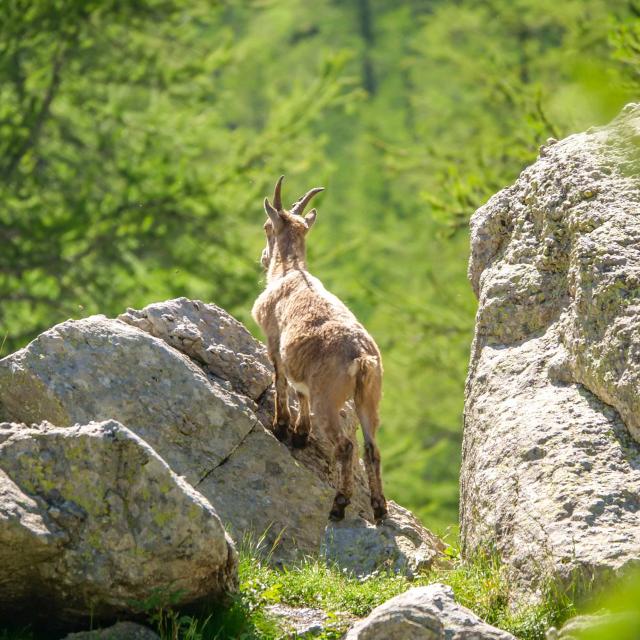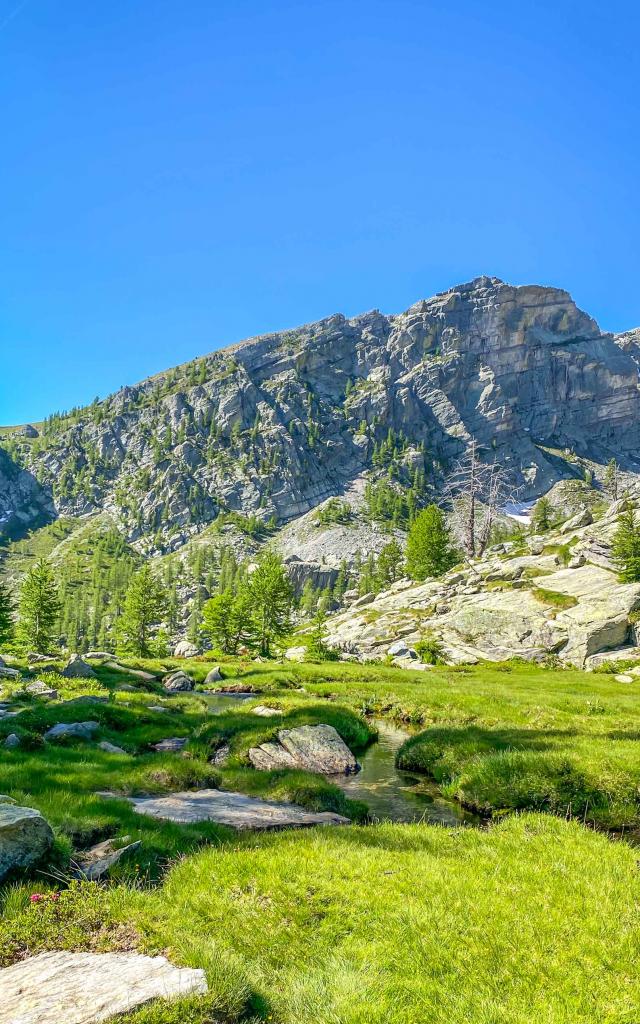



Mercantour was one of the very first national parks in France and was inaugurated in 1979. It is twinned with its Italian counterpart the Parco Naturale delle Alpi Maritime. France and Italy work together to protect its outstanding nature and fragile biodiversity on both sides of the border. The park spans six untamed valleys including two in the Menton, Riviera & Merveilles area: Roya and Bévéra. Roya-Bévéra has two signature vibes: Mediterranean landscapes, that are dry in the lower valleys where olive trees grow, and Alpine landscapes in the upper valleys where waterfalls and green and turquoise lakes abound.
The French Office for Biodiversity says: “biodiversity applies to any living thing and the ecosystem they live in. The term also covers how species interact with each other and their habitat.” Mankind would struggle to meet its basic needs without biodiversity: we need to protect its balance for today’s and future generations.
The scenery may be incredible but the forest is a key player in the ecological system. It covers a massive 20,000 hectares deep in Mercantour Park. It is mainly home to resinous trees in the Alpine valleys: Scotch pine, fir and spruce trees are among the most iconic species here. The larch takes pride of place further down. Swiss pine is scattered all over the area. Once you’re past the 2200m mark, the landscape changes and the forest makes way for grassland and heaths. It’s wonderfully diverse!



There are four Natura 2000 sites in the Roya Valley: 2293m high Mont Chajol and its tufts of mountain pine, the Breil-sur-Roya bat site, the limestone range in the Marguareis-La Brigue-Fonton-Saorge area and the La Bendola site in Saorge home to 16 natural protected habitats (dry grassland, wild orchids etc.). So, why are these sites listed? To protect the species or habitats that represent European biodiversity and take the challenges of biodiversity in human activities into account. The future depends on finding a compromise between protecting nature and human activities!
The park is home to as many as 8744 different species. Some of the residents are well-known: you may well spot some ibex, marmots and chamois on your outings. Wolves may not be as welcome a sight but it’s amazing to know they live here. There are currently seven packs in the park. Majestic golden eagles circle the skies above the Mercantour! Fifty-odd couples have been listed throughout the area. Mercantour is also home to thirty-odd species of bat. Since being reintroduced, the bearded vulture and griffon vulture have returned to the park’s wildlife scene. The future is bright!


Over 2000 different species have been found throughout the park including forty native ones. The saxifraga florulenta grows in cracks in the rockface and only flowers once in its long life, but it’s worth the wait! The downy-leaved berardia lanuginosa blooms in limestone scree. The gymnadenia corneliana is a species of orchid with light-pink petals that grows amongst the grass. The Mercantour landscapes are home to other dazzling species that need our protection: the dog rose, delicate and magical alpine columbine, spring gentian, trumpet gentian and orange lily.

